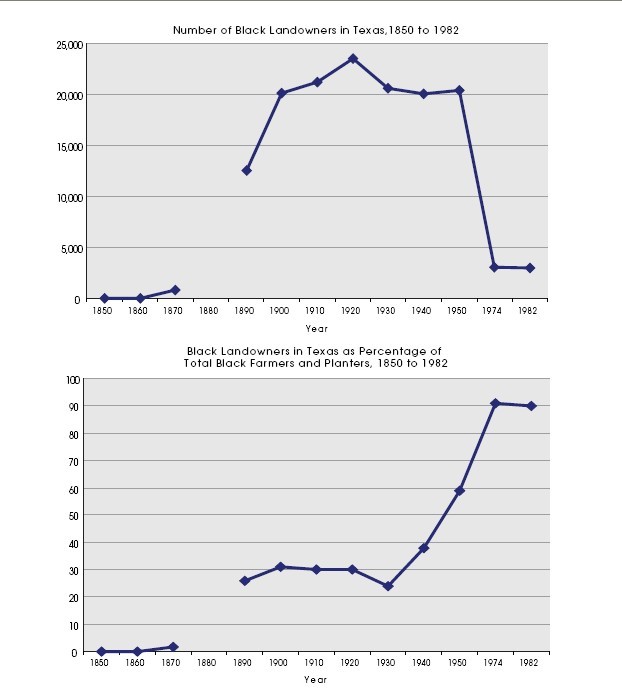
Permanent, stable freedmen’s colonies were based on ownership of land within the community. To freedmen, land represented self-determination and an ability to provide for themselves and their families rather than return to virtual servitude as sharecroppers or tenant farmers under their former slavemasters. The mere acquisition of land by men and women who could not read or write and who were emancipated with few possessions beyond the clothes on their backs was no small achievement. Some were assisted by their former masters, but most worked at odd jobs or as farm laborers for several years before they saved enough money to buy small parcels of land. In some Texas counties, potential landowners were hampered by laws that specifically prevented land sales to blacks.
Despite such obstacles, nearly one-fourth of African American farmers in the south succeeded in buying their own land between 1870 and 1890. In Texas, the increase in landownership among freedmen was extraordinary; in 1870, five years out of slavery, only 1.8 percent of the state’s black farmers owned land, but by 1890, an amazing 26 percent achieved landownership. Black landownership in Texas continued to increase and peaked at 31 percent just after the turn of the century; it then remained relatively stable through 1920.
These two graphs depict trends in the percentage of black landowners in Texas based on data from Loren Schweninger’s (1997) book: Black Property Owners in the South, 1790–1915 (noting that no data were available for 1880 in the sources he used). The top graph shows the total number of black landowners in Texas, which rose steadily from 1870 to 1920, and then began a downward slide and plummeted after 1950. The bottom graph shows the percentage of black landowners out of all black farmers and planters, which included renters, tenants, sharecroppers, and wage laborers. Agricultural census evidence shows that between 20 and 30 percent of black farmers were landowners from 1900 through 1930, and this percentage rose dramatically over the next four decades. These two graphs display reverse trends that are a reflection of one significant phenomenon—the Great Migration. It began in the late nineteenth century as rural blacks abandoned their farm-related jobs to move to the cities and out of the South. This migration exploded in the twentieth century as conditions got worse for blacks in the Jim Crow South. As the overall numbers of black landowners decreased, the percentage of landowners within the total black farmers and planters increased (while the actual numbers did not). Quite simply, black landowners had a reason to stay on the land and maintain their farms, while poor tenant farmers and laborers did not.